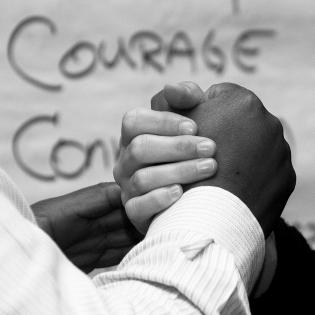Bringing Tolerance to Our Beaches
Through discussion of the book The Sneetches by Dr. Seuss, we learn about tolerance and the value of diversity in community.
The learner will:
- define tolerance and discrimination.
- speak out against discrimination in a letter to Congress.
- text from Leviticus 19:33-34 (see handout below)
- read-aloud copy of the book The Sneetches by Dr. Seuss
- email of representative to Congress
At home, talk about the importance of tolerance and fighting discrimination. They should discuss the letter that they wrote to their local Congress representative with their family members to help them decide who to support in future elections.
- Anti-Defamation League
- Jewish Virtual Library
- Lewis, Barbara A. Kids Guide to Social Action. Free Spirit Publishing, 1998.
- Seuss, Dr. The Sneetches.1961. ISBN: 0394800893
Instructions
Anticipatory Set:
Discuss what makes people different from one another. (It may be the way they look, the way they act, their family history and routines, the things they like to do, or the things they own.) Our differences bring a variety of ideas and talents to our community.
Give the summary that today's lesson is about differences, tolerance, and the injustice of discrimination.
Read the text from Leviticus 19:33-34. Ask who would be considered strangers (people they don’t know, people that look different, people who don’t belong to their group). Ask why we must treat all with love and kindness. Make sure they state the explanation given in the text (that the Jews were slaves in Egypt) but guide students to think beyond that as well. As we were not happy being strangers in a strange land, so we should not be unfriendly to strangers in our land.
Read The Sneetches, by Dr. Seuss. Guide them to state that their hatred was based simply on the way they looked and a desire to be superior. Ask them to explain in their own words what the Sneetches learned from their experience with Sylvester McMonkey McBean.
Explain that BEFORE McBean, there was discrimination on the beaches and AFTER McBean there was tolerance on the beaches.
Define discrimination as "the restrictive treatment of a person or group based on prejudiced assumptions of group characteristics, rather than on individual judgment. It is the denial of justice prompted by prejudice." Define tolerance as. "Act of recognizing or respecting the beliefs or practices of others."
Ask youth to name real-life situations in our present and past where people have been discriminated against based on their religion, race, ethnicity, gender, education level, or wealth.
When inustice exists, it is our role to do what we can to advocate for fairness. We each can ask our representatives in government to make laws that are fair to everyone. Discuss what injustice they see, and then do some research to learn the facts.
As a group, write letters to local representatives to the state or country. Ask for attention to an issue of injustice.
Students will write letters to their Congressmen to encourage them to speak out against discrimination, hate, racism, and anti-Semitism.
Handouts
Philanthropy Framework
-
Strand PHIL.II Philanthropy and Civil Society
-
Standard PCS 05. Philanthropy and Government
-
Benchmark E.12 Identify the idea of factions in society.
-
Benchmark E.3 Discuss the importance of personal virtue, good character, and ethical behavior in a democracy.
-
Benchmark E.9 Describe how philanthropic activities can bring about social change.
-
-
-
Strand PHIL.III Philanthropy and the Individual
-
Standard PI 01. Reasons for Individual Philanthropy
-
Benchmark E.1 Describe one reason why a person might give or volunteer.
-
-
